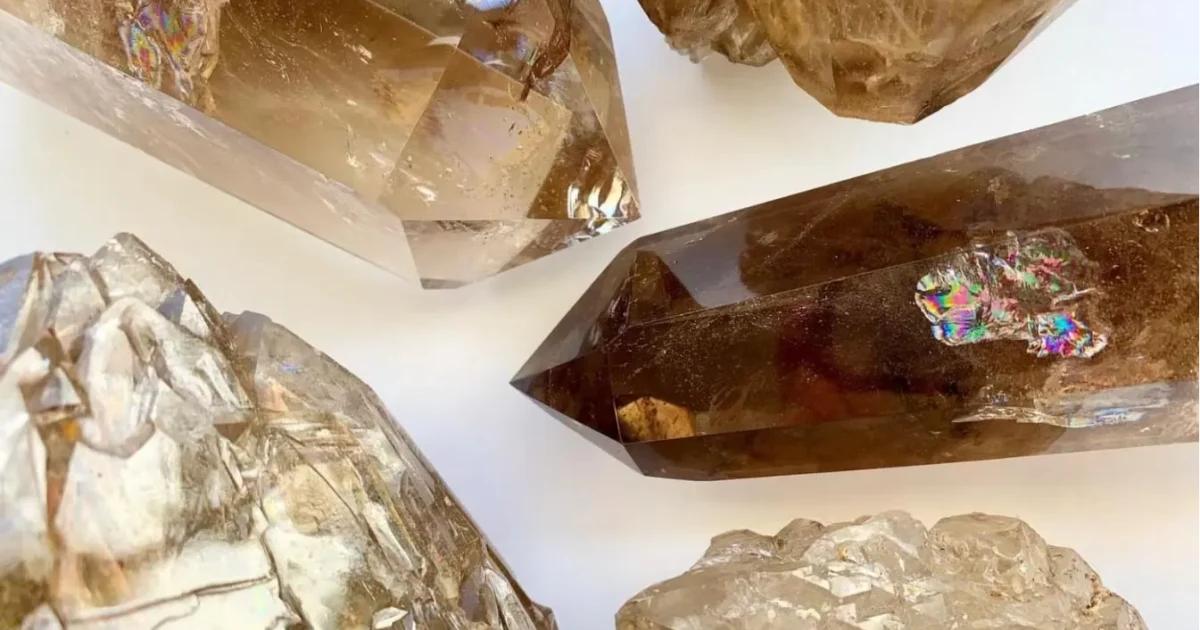
Natural vs Synthetic Crystals: How to Identify Natural Crystals
Natural crystal, a treasure from the depths of the Earth, is beloved for its crystalline beauty and the special meanings it carries. Whether worn as exquisite jewelry or believed to bring spiritual blessings, natural crystal holds a unique allure. However, with the wide variety of crystals available, distinguishing authenticity can be difficult. To possess authentic natural crystal, we need a thorough understanding of its formation, its energies, its differences from synthetic crystals, its value, and how to identify it.
In this guide, we will explore the formation process of natural crystal, the differences between natural and synthetic crystals, the unique energies of various natural gemstones, and how to identify natural crystal.
1.What is natural crystal?
The formation of natural crystal is a long and fascinating process. It primarily forms within igneous rocks, pegmatites, and hydrothermal veins deep within the Earth. In the early days of the Earth’s formation, magma in the mantle was constantly in motion. As this magma rose to the shallower crust, the cooling and pressure caused substances like silica in the magma to gradually cool and crystallize. This process requires specific geological conditions: first, a sufficient, saturated solution of silica is essential for crystal formation; second, suitable temperature and pressure are required. Generally speaking, temperatures around 573°C and pressures above 1 standard atmosphere are most conducive to crystallization. Furthermore, it takes a long time, ranging from hundreds of thousands to hundreds of millions of years, for the crystal to gradually grow and form.
Each natural crystal carries the energy imprint of the Earth. For this reason, many believe that natural crystals have healing properties, such as grounding energy, emotional balance, and chakra alignment.
2.The Energy of Different Natural Crystals
Each natural crystal carries the energetic imprint of the Earth. This is why many believe natural crystals hold healing properties, such as grounding energy, emotional balance, and chakra alignment.
Amethyst: Considered the “Stone of Wisdom,” it symbolizes wisdom and nobility. It is believed to enhance intuition and creativity, help people think and make decisions more clearly and rationally, and bring inner peace and tranquility.
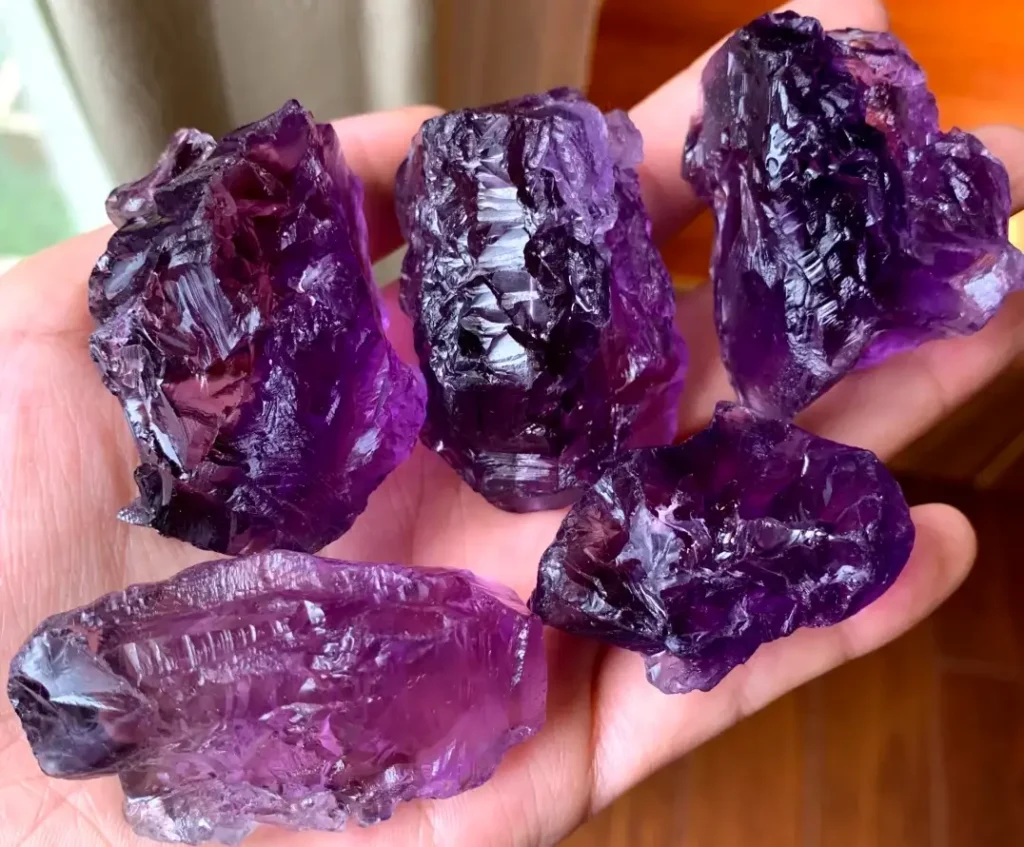
White Quartz: Known as the “King of Crystals,” it symbolizes purity and purification. It’s believed to purify the surrounding energy field, dispel negativity, elevate one’s spirit, and foster a positive and optimistic outlook.
Rose Quartz: Often called the “Love Stone,” it symbolizes love and tenderness. It’s believed to attract love, enhance harmony and understanding in interpersonal relationships, and allow people to experience greater love and care.
Citrine: Considered the “Wealth Stone,” it symbolizes wealth and career. It’s believed to attract positive wealth, help achieve career success, and accumulate wealth.
3.Comparison between Natural Crystal and Synthetic Crystal
Natural crystal and synthetic crystal differ significantly in many aspects, and understanding these differences can help us better distinguish them:
In terms of formation, natural crystal is formed naturally over millions of years of geological processes under specific temperature and pressure conditions. It is a masterpiece of nature, and each piece is unique. Synthetic crystal, on the other hand, is synthesized in a laboratory or factory under artificially controlled conditions to simulate the crystal formation process, resulting in a shorter period of time, typically measured in days or months.
In terms of appearance, natural crystal often has some natural imperfections, such as cotton wool, ice cracks, and air bubbles, and may also have uneven color distribution, while retaining a natural texture and luster. Synthetic crystal is generally more perfect in appearance, with a pure texture, few imperfections, and even color distribution, but lacks the natural dynamics of natural crystal. In terms of physical properties, natural crystal has a higher hardness, generally around level 7, and has good thermal conductivity. It feels cool to the touch, and this cool feeling lasts longer. Artificial crystal has a relatively low hardness, mostly around level 5-6, and has poor thermal conductivity. It feels relatively warm to the touch, and its temperature fluctuates more rapidly.
In terms of chemical properties, natural crystal is primarily composed of silicon dioxide, making it chemically stable. While artificial crystal is also primarily composed of silicon dioxide, it may contain other additives, making it less chemically stable.
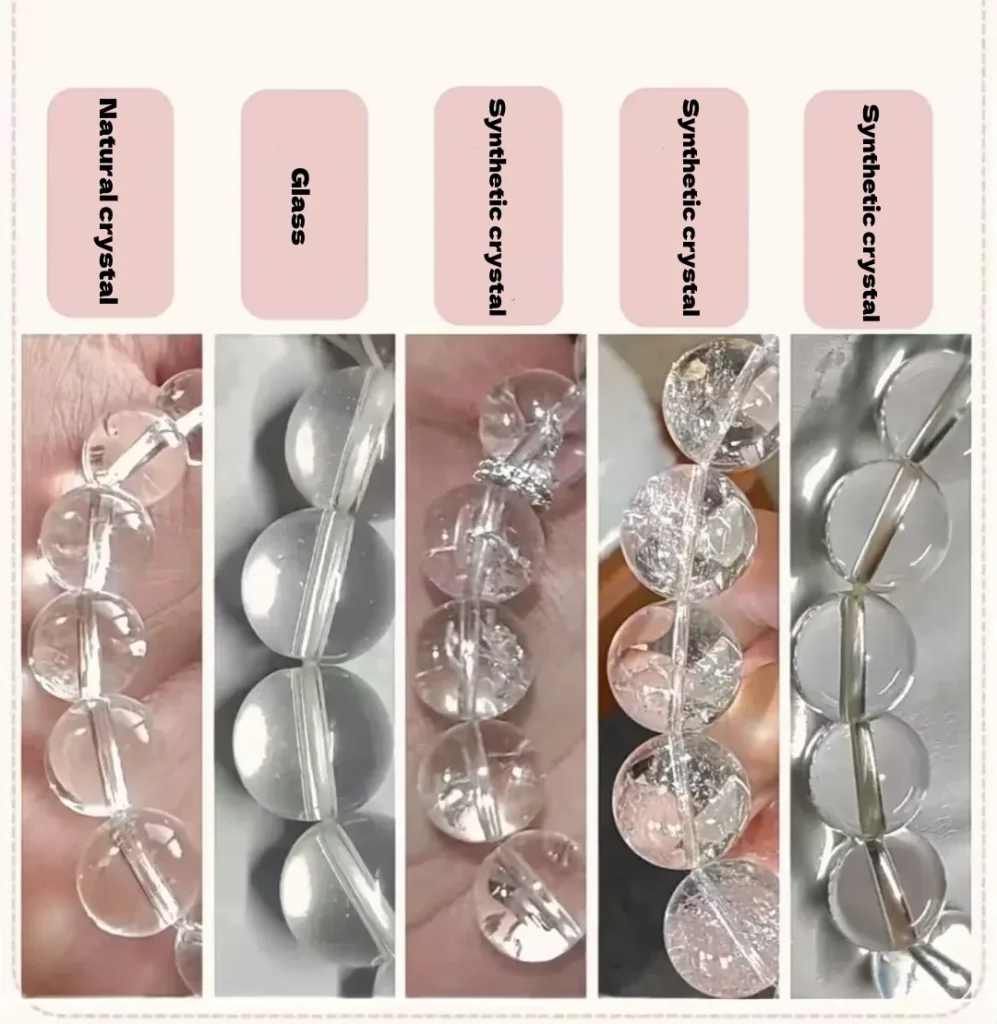
4.The Value of Natural Crystal
Each natural crystal resonates with a specific vibrational frequency, which interacts with our body’s energy field. This is why many practitioners of Reiki, Feng Shui, and alternative healing prefer natural crystals over synthetics.
First, its rarity. The formation of natural crystal requires specific geological conditions and a long period of time. Furthermore, high-quality natural crystal is extremely scarce, and scarcity makes it valuable, which gives it a high rarity value.
Second, its cultural value. Natural crystal has special symbolic meaning and cultural connotations in different cultures. For example, in some ancient civilizations, crystal was considered a sacred object, used in rituals and divination, and carries a rich cultural heritage. Secondly, there’s the decorative value. Natural crystals are crystal clear and colorful, making them highly decorative when crafted into jewelry such as necklaces, bracelets, and earrings, enhancing the wearer’s temperament and taste.
There’s also collectible value. Natural crystals of high quality, unique shapes, or those with special historical or cultural significance have a high collectible value, and their value may continue to increase over time.
Furthermore, from a psychological perspective, many people believe that natural crystals possess a certain energy that can bring comfort and inspiration, helping to relieve stress and relax. This psychological value is also not to be underestimated.
5.Identifying Natural Crystals: Practical Tips to Avoid Pitfalls
When purchasing natural crystals, knowing some identification methods can help you avoid buying counterfeit or inferior products. Here are some common identification methods:
Observe the appearance: Natural crystals typically have natural textures and inclusions, such as bubbles, cotton wool, and ice cracks, which are all signs of natural formation. Artificial crystals, on the other hand, often appear too perfect, with a more regular texture, lacking the natural feel of natural crystals.
Testing Hardness: Natural crystal has a relatively high hardness, generally around level 7. A light scratch on glass will leave a mark on the surface, but the natural crystal itself will remain intact. Artificial crystal has a relatively low hardness and may not leave a noticeable mark when scratched, and may even scratch the crystal itself.
Checking the Gloss: Natural crystal has a softer luster, exhibiting a warm, glassy sheen that changes depending on the angle. The luster of artificial crystal is often too glaring, appearing dull and lacking the vibrant energy of natural crystal.
Using Temperature: Natural crystal has good thermal conductivity and feels cool to the touch, and this coolness persists. Artificial crystal has poor thermal conductivity and feels relatively warm to the touch, with a more rapid temperature change.
Seeking Professional Appraisal: If you are unsure whether a crystal is genuine, seek the help of a professional appraisal agency or individual. They can use specialized instruments and techniques to analyze the crystal’s composition and structure to accurately determine whether it is natural. By combining the above methods, we can more accurately identify natural crystals and increase our chances of purchasing genuine natural crystals.
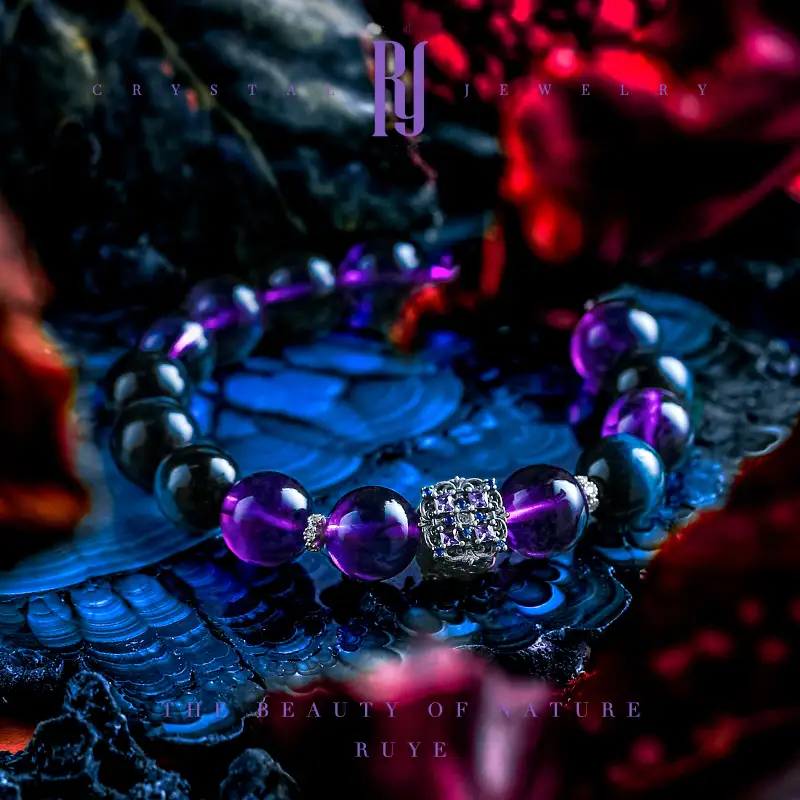
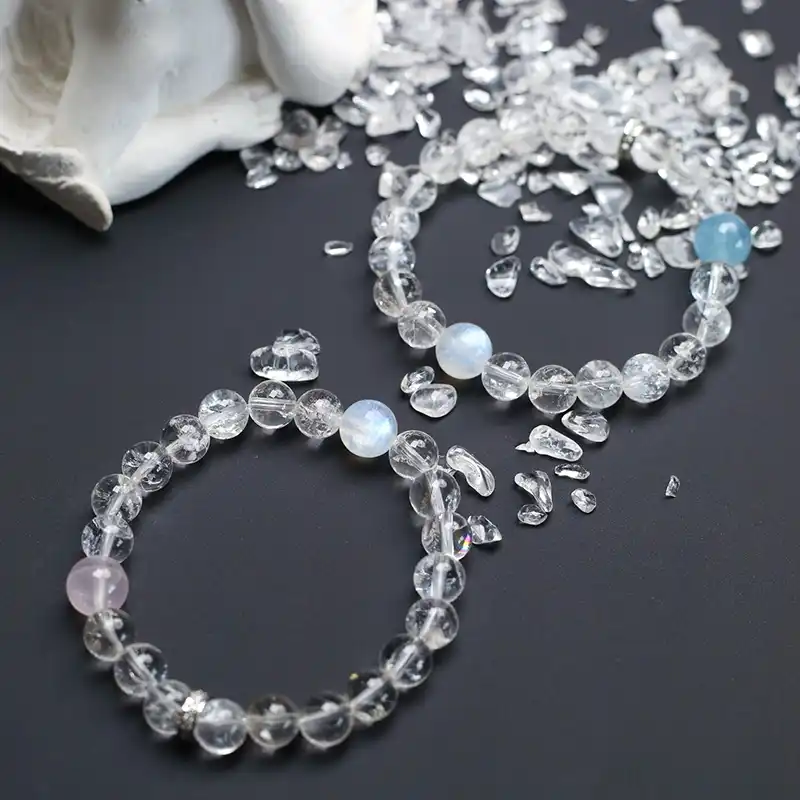
Simply put, natural crystals are more than just beautiful ornaments; they are treasures nurtured by nature and human culture. In a market saturated with imitation gemstones, understanding the differences between natural and synthetic crystals allows you to make informed and meaningful choices. Whether you’re a collector, healer, or spiritual seeker, always choose crystals that hold authentic energy and meaning





